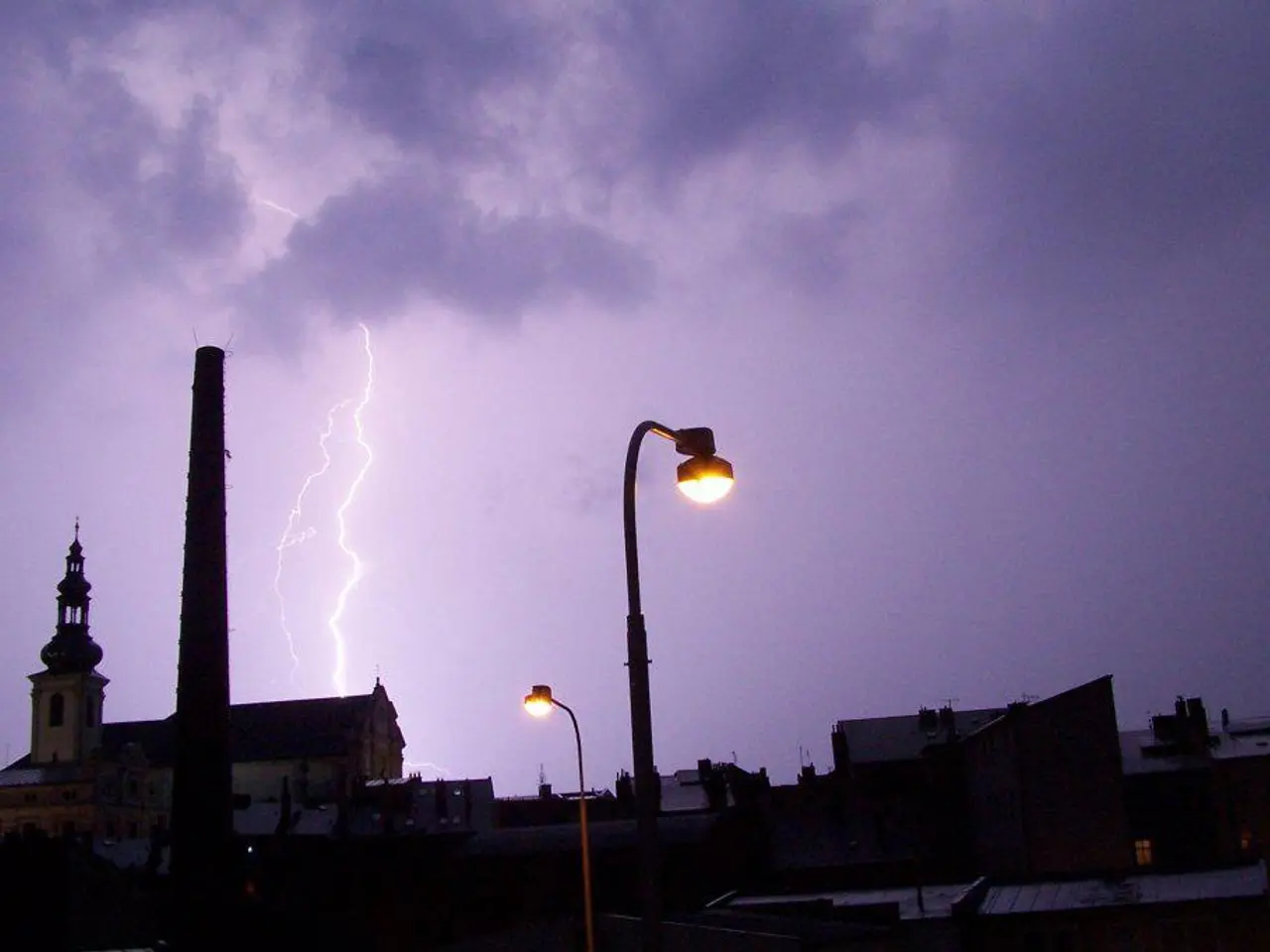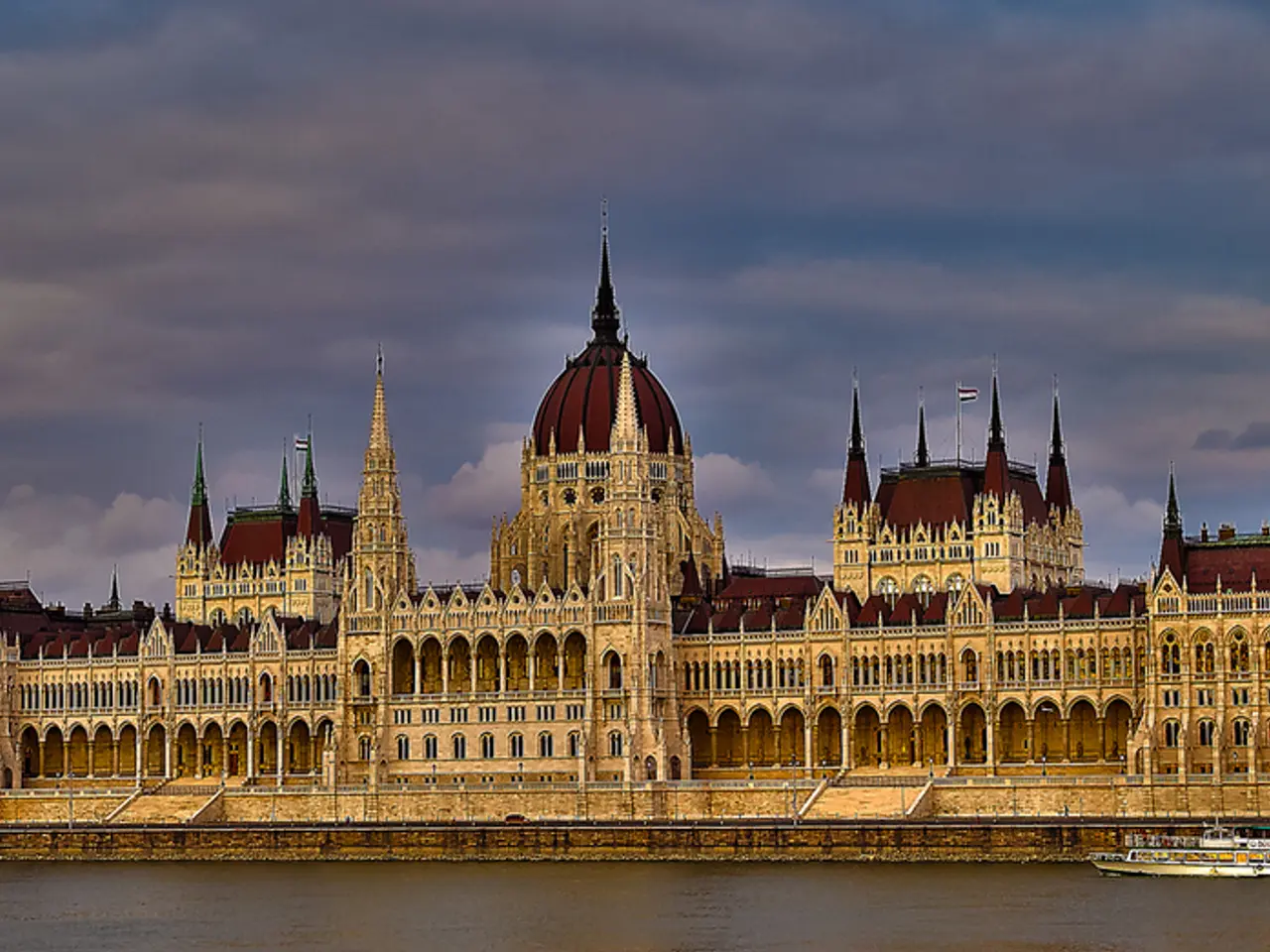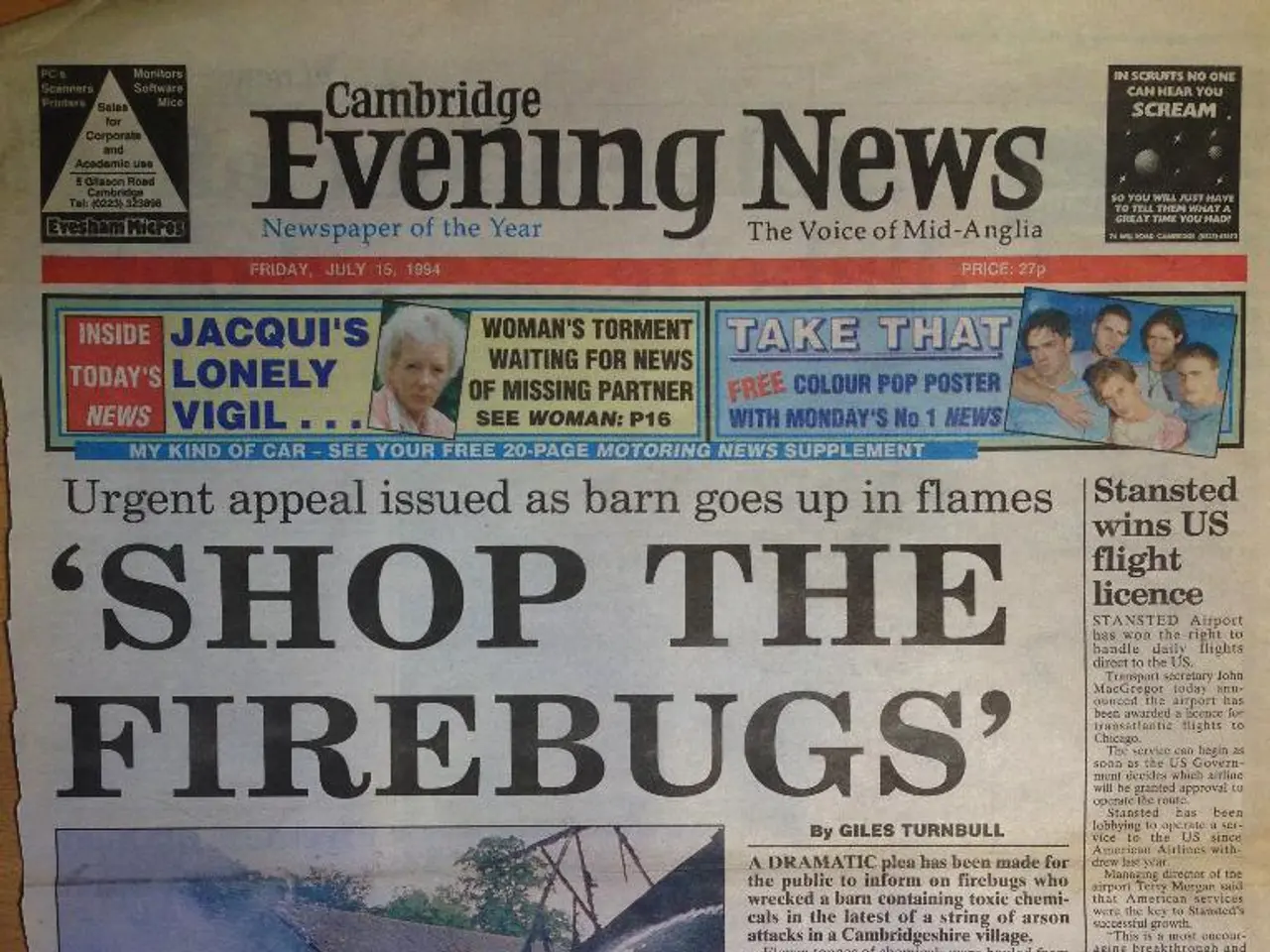Lamentably, two casualties have been reported in New Jersey following a catastrophic event during intense rainfall, where floodwaters swept away a vehicle.
In the heart of July 2025, the US Northeast found itself grappling with the aftermath of heavy rainfall, as the region experienced flooding in cities like New York and New Jersey. The primary cause of this natural disaster was extreme, record-breaking rainfall, which overwhelmed stormwater systems and led to the flooding of subways, roads, and disruptions to transportation services.
The heavy rains were part of a broader trend driven by climate change, resulting in warmer air with greater moisture-holding capacity and leading to more intense downpours and an increased likelihood of dangerous flooding. The floods were further exacerbated by a moisture-laden summer airmass and a quasi-stationary frontal boundary that lingered over the Northeast, prolonging the precipitation and increasing its intensity.
Urban areas, particularly New York City, were especially vulnerable due to large amounts of impervious surfaces, such as roads and buildings, which prevent rainfall from soaking into the ground, leading to rapid runoff and flash flooding. The result was a significant disruption to daily life, with flooded subways, roads, and delays or suspensions of train and bus services.
Emergency services were called into action, conducting water rescues and closing roads due to the flooding. In parts of Virginia and New Jersey, flash flood emergencies were declared, with Governor Phil Murphy of New Jersey declaring a state of emergency. The Federal Aviation Administration (FAA) also declared ground stops at major airports, including JFK, LaGuardia, Newark, and Reagan National, due to inclement weather, resulting in widespread travel delays.
While the Northeast saw less loss of life compared to other regions, the flooding caused substantial property damage, business interruptions, and highlighted the growing risks of urban flooding in an era of climate change. Nationwide, the National Weather Service (NWS) has issued a record number of flash flood warnings in 2025, reflecting the increased frequency and severity of such events.
The repeated, intense flooding events are testing the resilience of urban infrastructure and emergency response systems, revealing vulnerabilities that need to be addressed to protect communities in the future. In response, measures have been taken to improve stormwater management, such as installing storm barriers at subway station entrances, seals beneath subway air vents, and raising curbs to elevate vents and entrances above sidewalk level.
Looking back at Superstorm Sandy in 2012, the 2025 floods underscore how climate change is amplifying weather extremes, and how urbanized regions are especially vulnerable to the sudden, intense rainfall events that are becoming more common across the United States. The heavy rains in Central Park on July 14, 2025, were the second-highest one-hour rainfall ever recorded, surpassed only by the remnants of Hurricane Ida in 2021.
In the aftermath of the floods, city officials emphasized that the venerable sewer system worked as well as it could, but it was not built to handle such heavy rain. The Environmental Protection Commissioner, Rohit Aggarwala, compared the overflowing sewer system in New York to putting a 2-liter bottle of water into a 1-liter bottle, implying that it was not built to handle the amount of rain.
In summary, the 2025 floods in the US Northeast were primarily caused by extreme, record-breaking rainfall. These heavy rain events are part of a broader trend driven by climate change, leading to increased risks of urban flooding and the need for improved infrastructure and emergency response systems. The floods caused significant disruptions to daily life, transportation, and air travel, as well as property damage and business interruptions. As the world continues to grapple with the impacts of climate change, it is crucial to invest in resilient infrastructure and emergency preparedness measures to protect communities and mitigate the risks of extreme weather events.
| Category | New York & New Jersey (2025 Floods) | |---------------|-----------------------------------------------| | Primary Cause | Extreme, record-breaking rainfall | | Climate Link | Heavy rains intensified by climate change | | Urban Impact | Flooded subways, roads, transit disruptions | | Emergency | State of emergency (NJ), water rescues | | Air Travel | Airport ground stops, flight delays | | Infrastructure| Stormwater systems overwhelmed | | Economic Cost | Property damage, business interruptions |
In light of the record-breaking rainfall, urban areas, especially New York, experienced a surge in accidents due to the flooded roads and delays in transportation services. Moreover, the general news of 2025 highlighted the dangers of weather extremes, as the flooding events exposed the vulnerability of cities like New York and New Jersey to weather-related disasters, particularly in the context of climate change.







